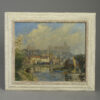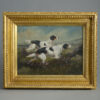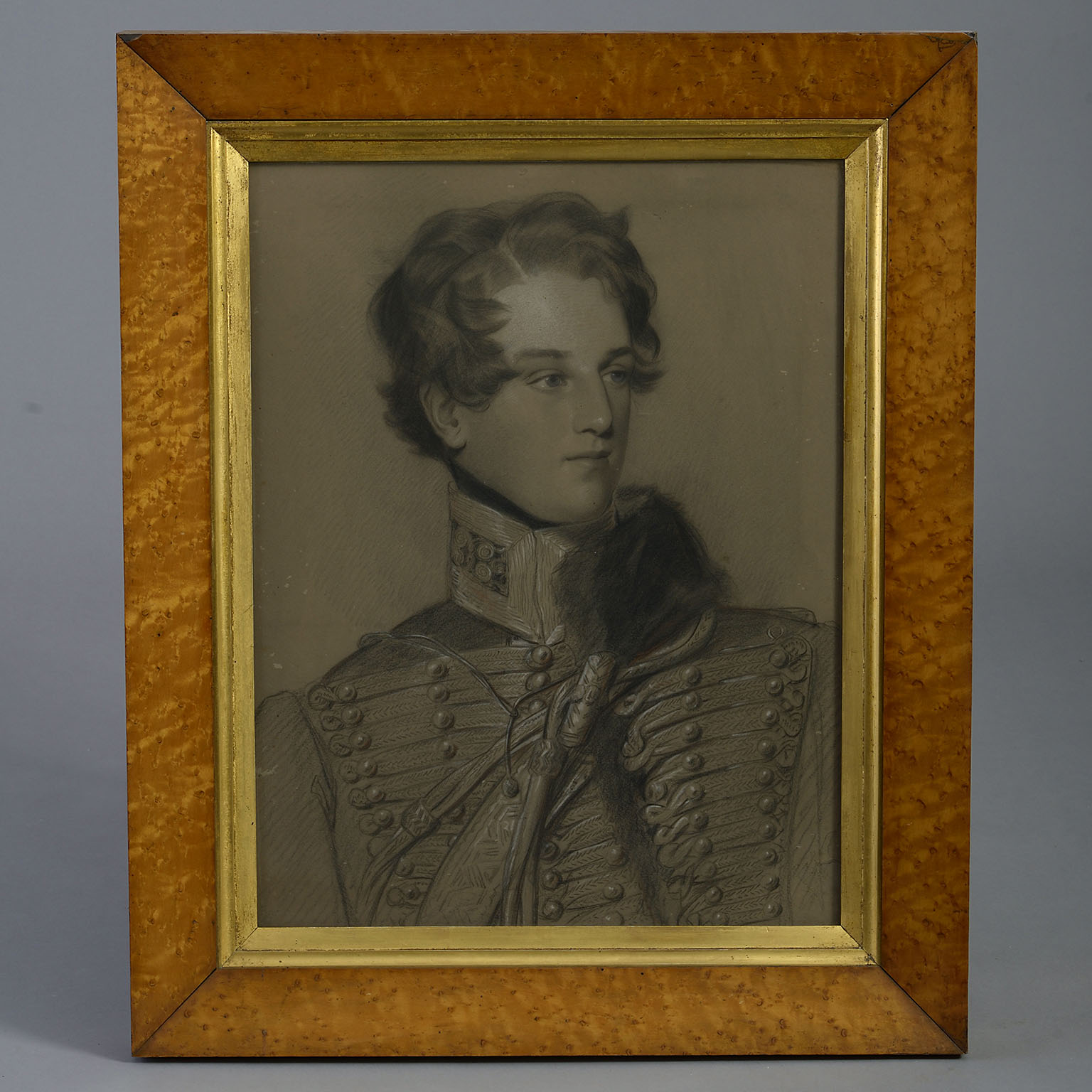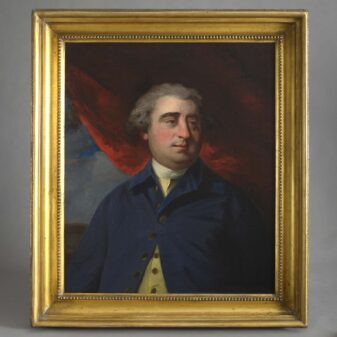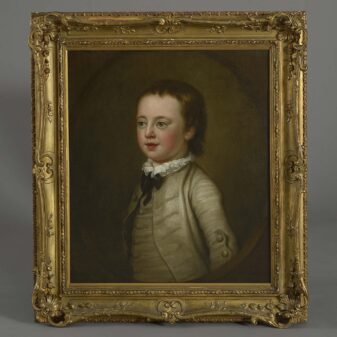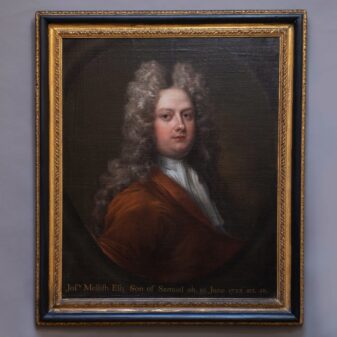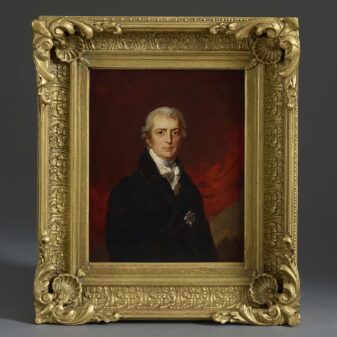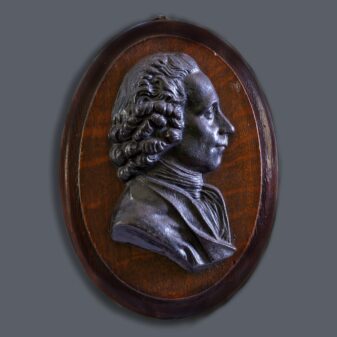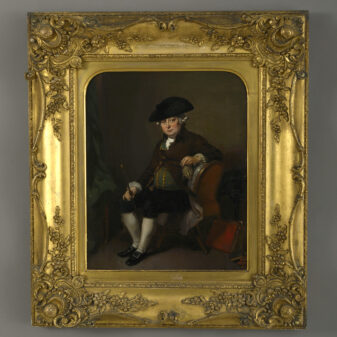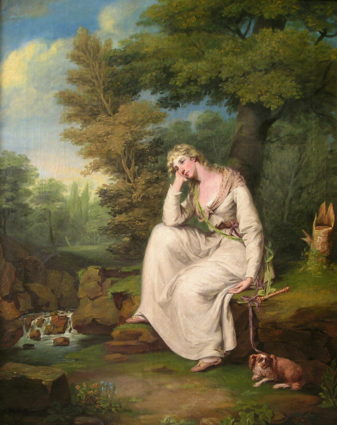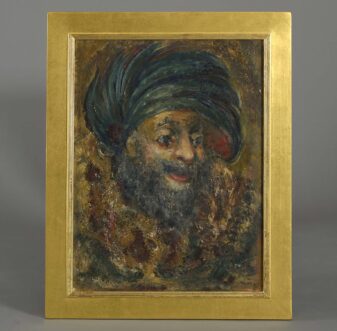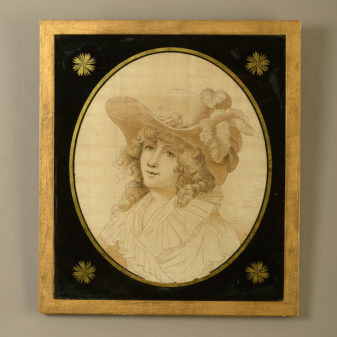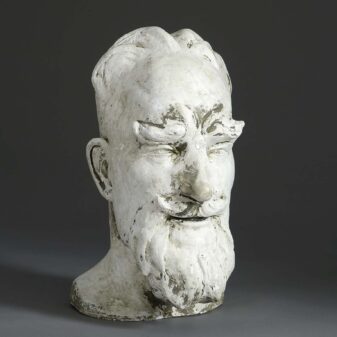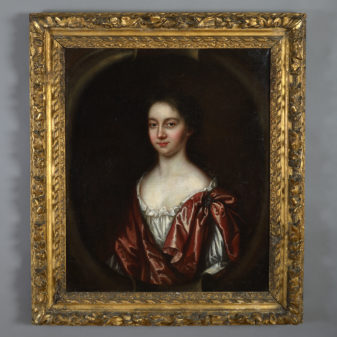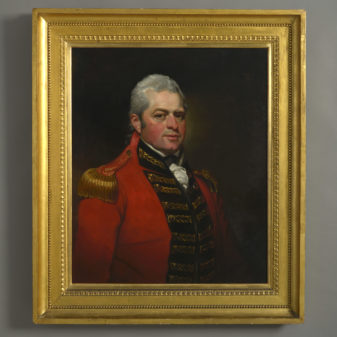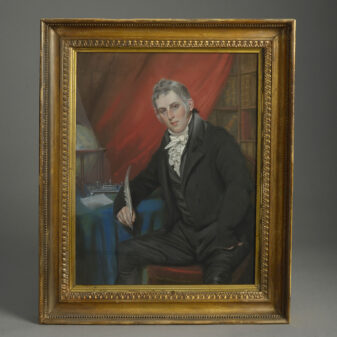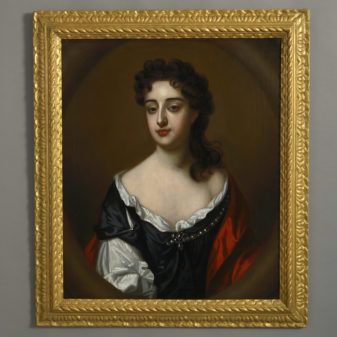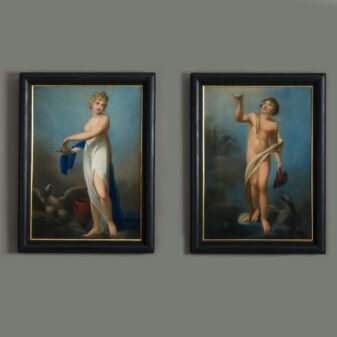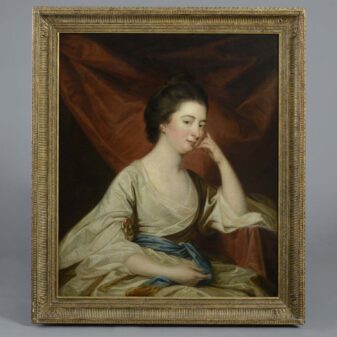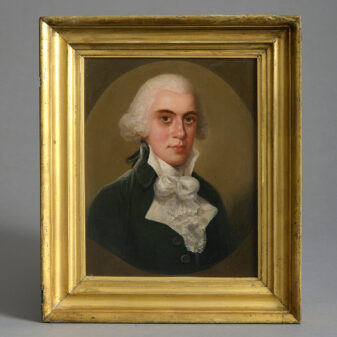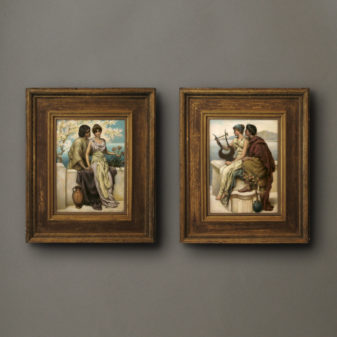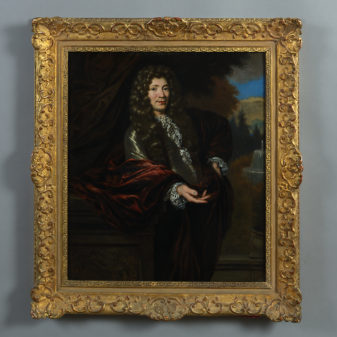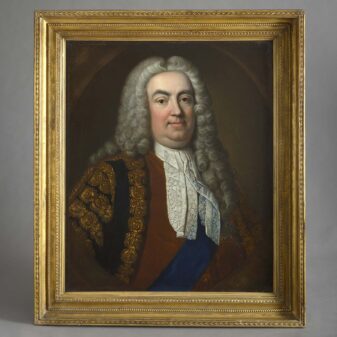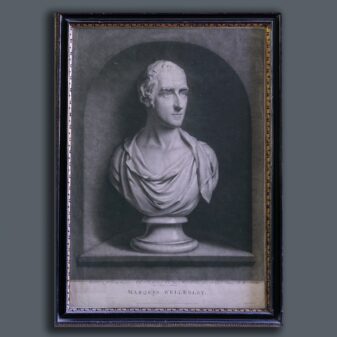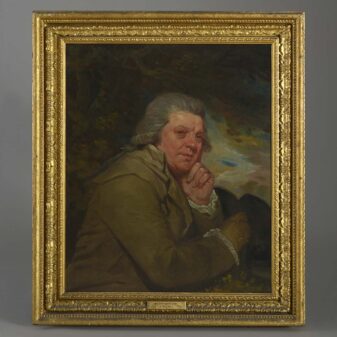Circa 1830 England
Francis William Wilkin, Portrait of Capt. Lord Edward Crofton (1806-1869)
£5,500
SOLD
Height 32 inches (81 cm)
Width 26 inches (66 cm)
Depth 2 1/2 inches (6 cm)
Francis William Wilkin
Portrait of Capt. Lord Edward Crofton (1806-1869)
Chalks on paper; held in period maple frame
Provenance: By family descent
Edward Crofton was the son of the Hon. Sir Edward Crofton, 3rd Baronet of Mote Park, Co. Roscommon, Ireland and Lady Charlotte, daughter of John Stewart, 7th Earl of Galloway. He was educated at Charterhouse and joined the army in the 81st Foot as an ensign, later transferring to a Captaincy in the 7th Hussars. He married in October 1833, Georgina, daughter of Henry Paget, 1st Marquess of Anglesey, Colonel-in-Chief of Crofton’s regiment. He succeeded his father in the baronetcy in 1816 and the following year he inherited the barony of Crofton on the death of his grandmother. After leaving the army he gravitated towards politics, being elected an Irish Representative Peer in 1840. He went on to serve in the Conservative administrations of the Earl of Derby and Benjamin Disraeli as a Lord-in-Waiting (government whip in the House of Lords) in 1852, from 1858-59 and from 1866-68.
The artist Francis Wilkin entered the Royal Academy Schools in 1815 and was encouraged by both Benjamin West and Sir Thomas Lawrence, whose influence is clearly seen in this portrait of Crofton as a young Captain. He appears to have gained certain popularity by drawing portraits on a large scale in chalk; striking and grand these essentially monotone depictions of personality stand out as distinctive works. Perhaps influenced by Lawrence’s own drawings on canvas, Wilkin produced a fair few indicating that there was a keen market for such pictures, contrasting with his more conventional oils. He regularly exhibited until 1841 and had a distinguished clientele with some aristocrats commissioning many portraits of their extended families. Crofton’s father-in-law, Henry Paget, 1st Marquess of Anglesey, was painted by Wilkin around 1825 and it is quite likely that this association led to the creation of the dashing portrait presented here.
Examples of these large chalk drawings can be found in country house collections including the Earls Spencer at Althorp, the Marquesses of Anglesey, the Marquesses of Sligo, and several National Trust properties, including Felbrigg Hall, Norfolk.

